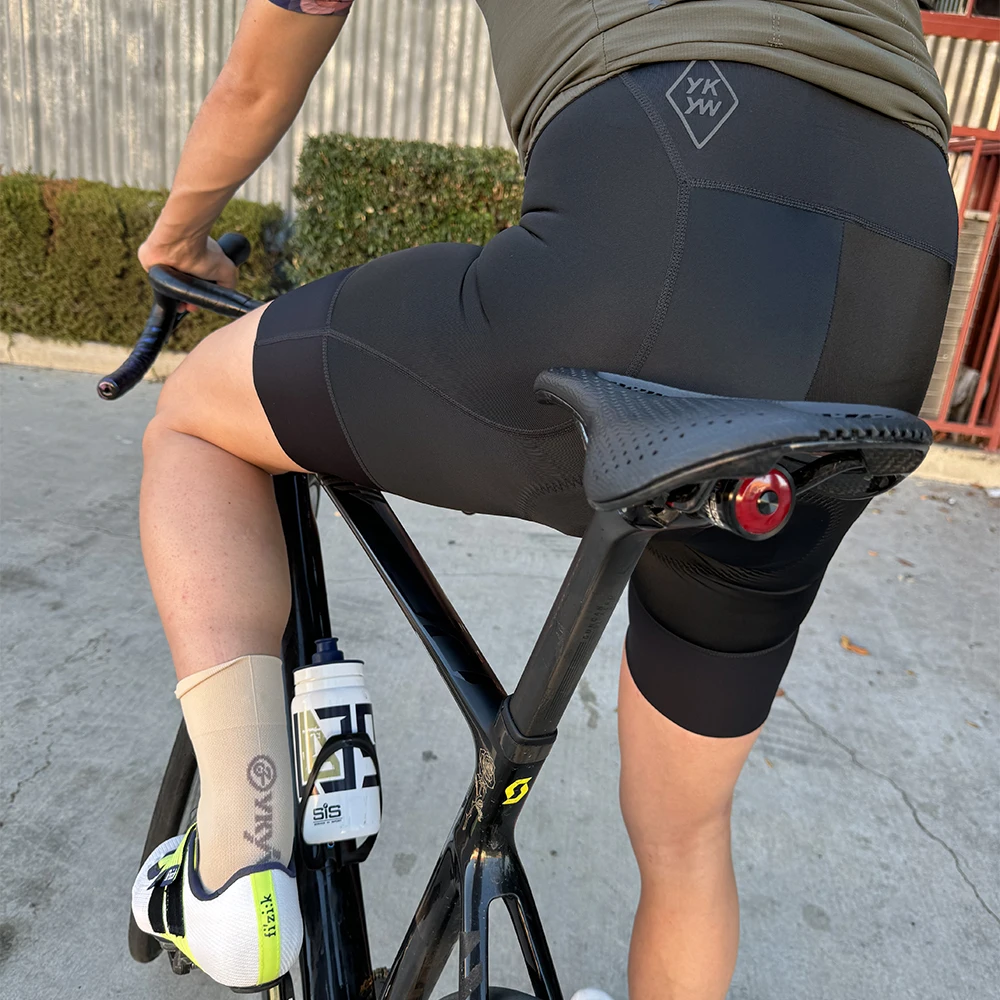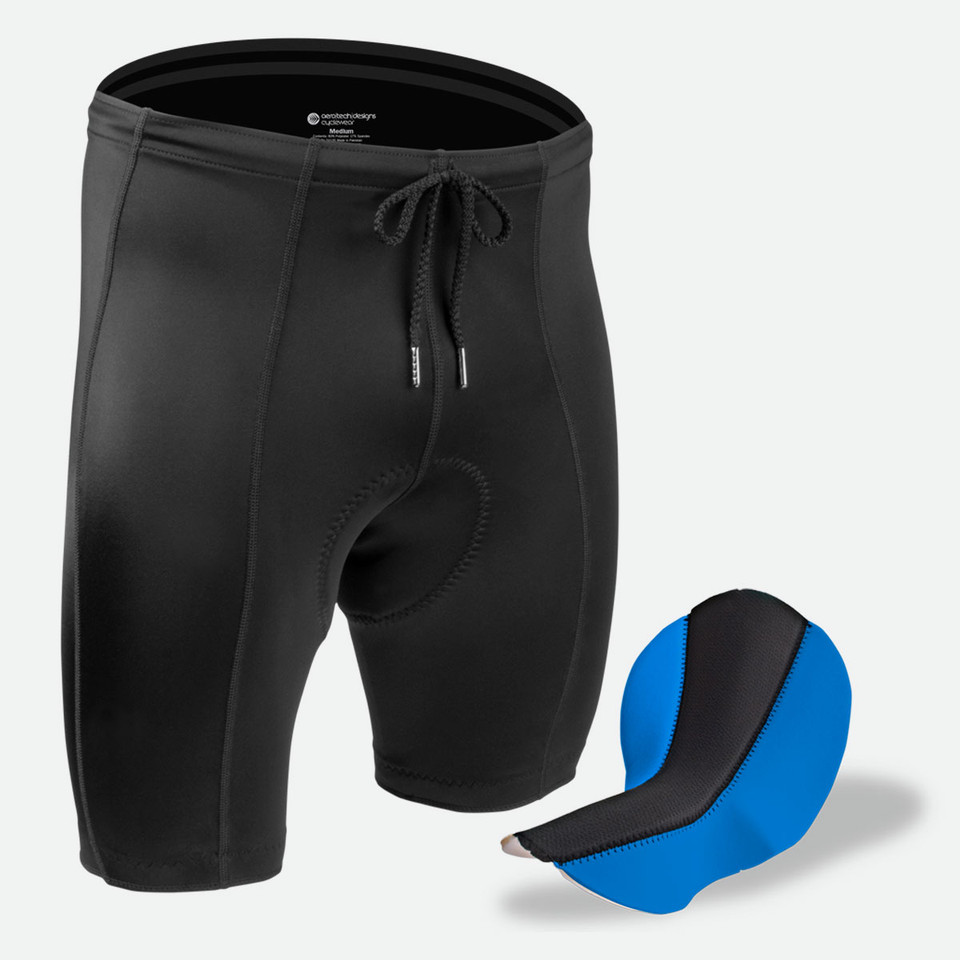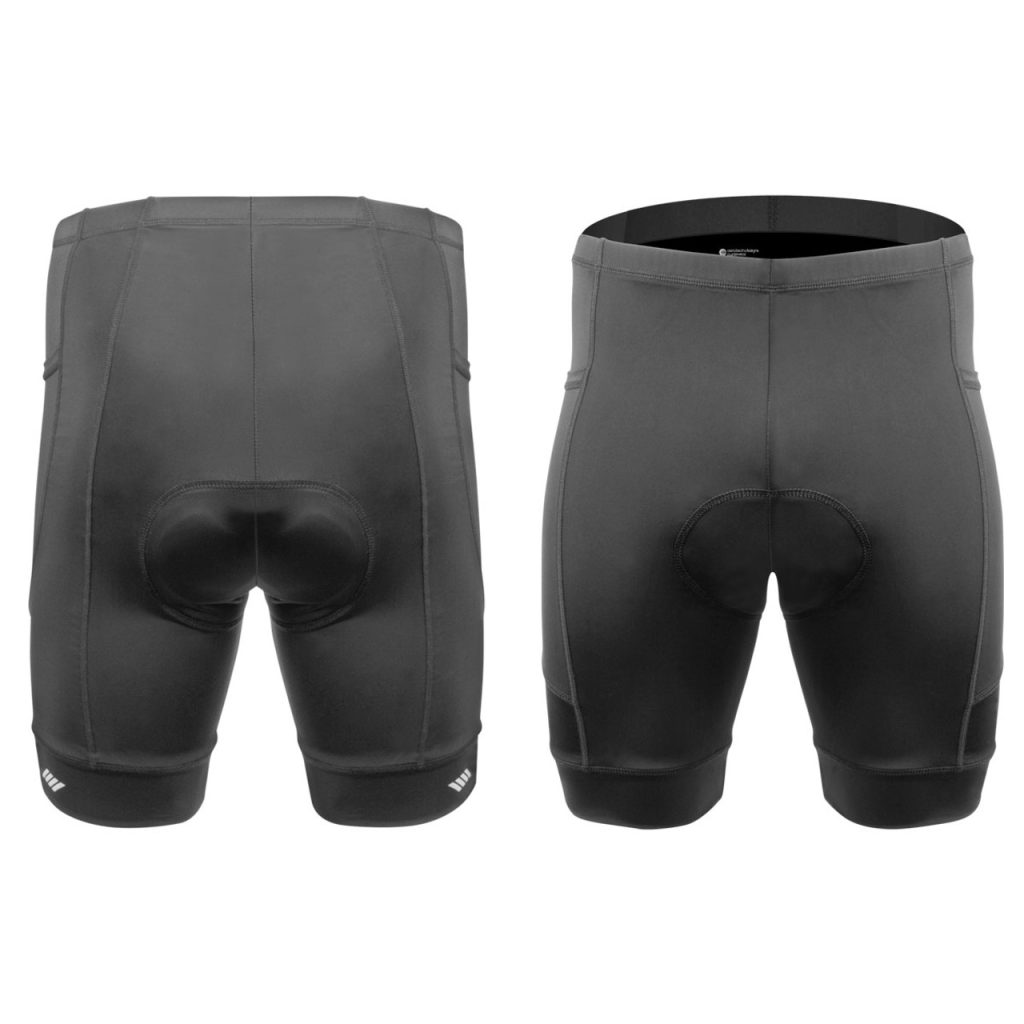How to Choose Bike Shorts with the Right Chamois Thickness and Fit? Chamois bike shorts have become essential gear for cyclists of all levels. They are not just ordinary shorts. Instead, they are engineered to improve comfort and performance on every ride. The key feature is the chamois padding, which sits between you and the saddle.
This padding reduces friction, absorbs shock, and prevents soreness. Without it, long rides can lead to discomfort or even injury. Whether you’re commuting, training, or racing, chamois bike shorts make a real difference. As a result, more riders are choosing them as part of their standard kit.
 Understanding the Role of the Chamois in Cycling Comfort
Understanding the Role of the Chamois in Cycling Comfort
The chamois is the padded insert sewn into cycling shorts. It acts as a cushion between your body and the bike seat. This layer minimizes pressure on sensitive areas.
Moreover, it wicks away moisture from sweat. Damp fabric can cause chafing and irritation. A good chamois keeps the area dry throughout the ride.
It also reduces vibration from rough roads. Constant shaking can lead to numbness over time. The padding helps absorb these impacts.
Different chamois types vary in thickness and density. Thin ones suit short rides or aggressive positions. Thicker versions support endurance events.
Some are shaped anatomically. They follow the body’s natural curves. This improves fit and reduces bulk.
Materials range from foam to gel-infused layers. Each offers unique benefits.
Ultimately, the chamois is what sets these shorts apart. It transforms a basic garment into functional athletic wear.
How Chamois Design Affects Performance and Fit
Design plays a major role in how well chamois bike shorts work. Seamless construction prevents rubbing. Traditional stitching can create pressure points. Flatlock seams reduce this risk.
The shape of the padding matters too. Center channels improve blood flow. They relieve pressure on soft tissues. This helps avoid numbness during long sessions.
Density varies by brand and model. Softer foam feels comfortable at first. Firmer foam lasts longer and supports better posture.
Some chamois use multi-density zones. These provide extra cushion where needed. For example, denser foam sits under sit bones. Lighter foam covers sensitive regions.
Placement must align with your riding position. A misaligned pad causes discomfort. Custom tailoring ensures perfect positioning.
Breathability is another factor. Mesh panels increase airflow. This keeps the area cool and dry.
A well-designed chamois enhances both comfort and efficiency.
 Choosing the Right Material for Durability and Comfort
Choosing the Right Material for Durability and Comfort
Fabric choice affects how chamois bike shorts feel and last. Most are made from nylon-spandex blends. These offer stretch and recovery.
Nylon resists abrasion and holds its shape. Spandex allows freedom of movement. Together, they create a snug but flexible fit.
Moisture-wicking properties are crucial. Sweat builds up quickly during rides. Fabrics that pull moisture away help prevent rashes.
Compression fabrics support muscles. They reduce fatigue on long climbs. Many athletes prefer this added benefit.
Some brands use recycled materials. These reduce environmental impact. They perform just as well as traditional fabrics.
UV protection is available in some models. This shields skin during sunny rides.
Antimicrobial treatments fight odor. Bacteria grow in damp environments. Treated fabrics stay fresher longer.
Durability depends on weave quality. Tight weaves resist pilling and tearing.
Choose materials based on your riding habits and climate.
How Fabric Weight Influences Breathability and Support
Fabric weight determines how breathable and supportive the shorts feel. Lightweight fabrics suit hot weather. They allow maximum airflow.
These are ideal for summer rides or indoor cycling. They dry fast and feel nearly invisible.
Mid-weight fabrics balance support and breathability. They work well in spring and fall. Their structure holds the chamois in place.
Heavyweight options are rare. They may be used in cold-weather variants. These often include thermal lining.
Breathable panels appear in high-sweat zones. Mesh inserts under the legs or back enhance ventilation.
Tighter weaves offer more compression. This stabilizes muscles during effort. Loose weaves prioritize airflow over support.
Consider your environment when choosing weight. Hot climates demand lighter materials. Cooler areas may need slightly heavier builds.
All weights should retain shape after washing. Poor-quality fabric sags over time.
Smart selection leads to better performance.
 How to Select the Best Fit for Your Body Type
How to Select the Best Fit for Your Body Type
Fit is critical when buying chamois bike shorts. They should feel tight but not restrictive. A snug fit prevents bunching and chafing.
Start by measuring your waist and hips. Compare these numbers to brand size charts. Sizing varies across manufacturers.
Try them on if possible. Move around to test flexibility. Bend forward into a riding position. Check for tension or gaps.
Leg grippers keep the shorts in place. Silicone strips prevent rolling. Without them, fabric may ride up.
Length matters too. Shorter legs suit casual riders. Longer legs offer more muscle support.
Avoid wrinkles in the chamois area. These can cause friction sores. Smooth contact is essential.
If you’re between sizes, go with the smaller one. Compression shorts expand slightly with use.
A proper fit means you forget you’re wearing them.
Differences Between Men’s and Women’s Chamois Bike Shorts
Men’s and women’s chamois bike shorts differ in design. These changes reflect anatomical needs.
Women’s versions have wider hip measurements. The waist often sits lower. This matches typical female body shapes.
The chamois shape differs too. Women’s pads are broader at the back. They cover sit bones more fully.
They also lack center padding in front. This avoids pressure on sensitive areas. Some include a cutout channel for relief.
Men’s chamois are narrower and longer. They support different pelvic structures. Front sections are reinforced for comfort.
Waist height varies. Men’s shorts often have higher backs. This protects skin when leaning forward.
Brands label styles clearly. Always check gender-specific features before buying.
Unisex models exist but may not fit perfectly.
Choosing the right version improves long-term comfort.
Caring for Your Chamois Bike Shorts to Extend Lifespan
Proper care keeps chamois bike shorts functional. Wash them after every ride. Sweat breaks down fibers and causes odors.
Hand washing is best. Use cool water and mild detergent. Gently rub stained areas near the padding.
If using a machine, place shorts in a mesh bag. Select cold water and gentle cycle. Turn them inside out first.
Never use bleach or fabric softener. These damage elastic and wicking properties. They also break down chamois foam.
Rinse thoroughly to remove soap residue. Leftover chemicals irritate skin.
Air dry flat or hang upside down. Avoid direct sunlight. UV rays fade colors and weaken fabric.
Do not wring or twist the shorts. This deforms the chamois. Press between towels instead.
Inspect regularly for wear. Replace when padding flattens or fabric loses stretch.
Good habits ensure lasting quality.
Sustainable and Eco-Friendly Options in Chamois Bike Shorts
Sustainability is growing in activewear. Many brands now offer eco-friendly chamois bike shorts. These use recycled nylon or polyester.
Some source fabric from ocean plastic. This reduces pollution and waste. Performance remains high.
Organic cotton blends appear in limited editions. They avoid pesticides and reduce water use.
Low-impact dyes minimize chemical runoff. They require less energy and water. Certifications like OEKO-TEX confirm safety.
Packaging is changing too. Minimalist wraps replace plastic clamshells. Some companies use compostable mailers.
Ethical factories ensure fair labor practices. Workers receive safe conditions and fair pay.
Consumers support these values more than ever.
Choosing sustainable chamois bike shorts supports planet-friendly innovation.
 Where to Buy High-Quality Chamois Bike Shorts
Where to Buy High-Quality Chamois Bike Shorts
Online stores carry a wide selection. Amazon offers fast shipping and customer reviews. These help identify top performers.
Specialty cycling retailers like REI or Competitive Cyclist curate premium options. They focus on performance and fit.
Brand websites often have exclusive colors. They also provide detailed sizing guides. Some offer virtual fitting tools.
Etsy features handmade or custom-fit versions. Independent makers tailor shorts to exact measurements.
Check return policies before buying. Not all sellers accept exchanges. Know your options in case of sizing issues.
Compare prices across platforms. Higher cost doesn’t always mean better quality. Read feedback on durability and comfort.
You’ll find reliable chamois bike shorts with research.
Frequently Asked Questions
Should I wear underwear with chamois bike shorts?
No. The chamois is meant to sit directly against the skin. Underwear traps moisture and increases friction.
How often should I replace my shorts?
Every 6–12 months with regular use. Replace when padding compresses or fabric sags.
Can I wear them for other activities?
Yes. Some use them for spinning, hiking, or motorcycling. The padding still provides comfort.
Do they come in different lengths?
Yes. Common lengths are 6-inch, 8-inch, and 10-inch. Choose based on leg coverage and support needs.
Are there plus-size options?
Yes. Many brands offer extended sizes. Look for inclusive sizing charts.
Do women’s shorts fit men?
Not ideally. Anatomical differences affect comfort. Stick to gender-specific designs.
Can I swim in chamois bike shorts?
No. Chlorine damages the fabric and padding. Use swim-specific gear instead.
Are they suitable for beginners?
Absolutely. New riders benefit from reduced soreness. They make early experiences more enjoyable.
 Final Thoughts
Final Thoughts
What Are the Best Chamois Bike Shorts for Long-Distance Cycling Comfort? Chamois bike shorts are more than just clothing. They are performance gear designed to enhance your ride. From reducing friction to supporting posture, they deliver real benefits.
They adapt to different body types, climates, and riding styles. With proper care, they last for hundreds of miles.
Sustainable options support eco-conscious choices. They prove function and ethics can coexist.
Whether you’re a weekend rider or a daily commuter, invest in quality. Comfort leads to longer, safer, and more enjoyable rides.
In the end, chamois bike shorts are a smart upgrade for any cyclist. No serious rider should be without them. After all, the right pair of chamois bike shorts can transform your entire cycling experience.

